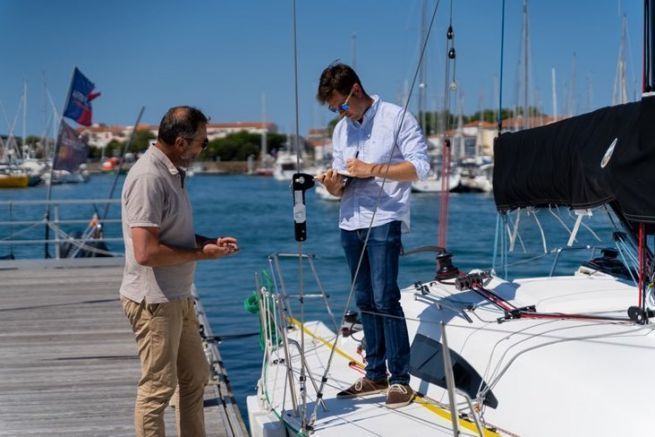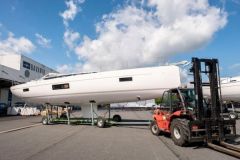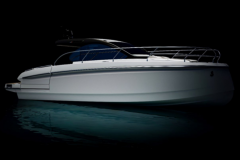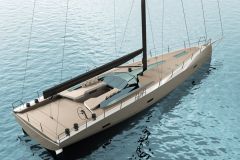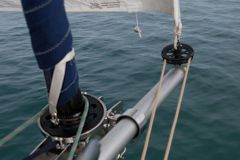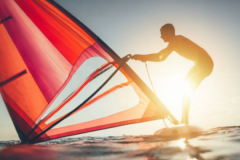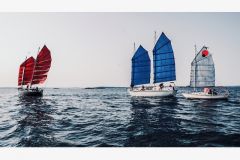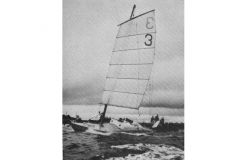The choice of the mast
The rigging will transmit the power of the wind in the sails to the hull to make it move forward. It is therefore an important part of the "engine". The rigging is made up of the spars (masts, boom, bowsprit...) and the shroud that holds it all in place.
For a construction site, it is common (and easy) to choose a complete package (mast, boom, shrouds) from the same supplier. By doing so, there is a good chance that some elements will not be adapted to the right needs. For example, you may end up with a mast profile that is too thick, because the model below it is not stiff enough.

To choose the right mast, it is important to find the right profile with the right stiffness for the boat. At J Boats for example, the shipyard will look for each part adapted to the need. This means that we can end up with 5 suppliers for each rigging set of a boat model. Or even when the shipyard cannot find the profile among those available from the manufacturers, it goes so far as to propose to a manufacturer to develop their own line. This is the case for the J/112 and J/99 masts. In addition, the development of this dedicated profile has allowed us to develop an innovation by integrating the rail directly into the profile. This increases the stiffness while decreasing the weight.
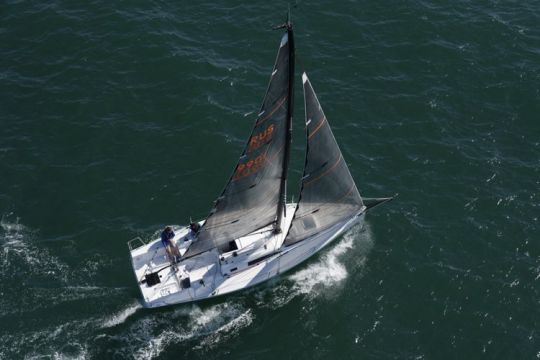
Thus, with an equivalent ballast, the boat is much more stable, thus more performing. This is obvious on the J/99 where it allows the owner to avoid an expensive "carbon mast" option (about 20% of the boat's budget). In the summer of 2021, the n°90 will leave the shipyard without having been ordered with a carbon mast. The custom aluminum mast is totally consistent with the program of this sailboat (racing and cruising).
The performance of the J/99 with this specially developed aluminum mast is as good as with a carbon mast.
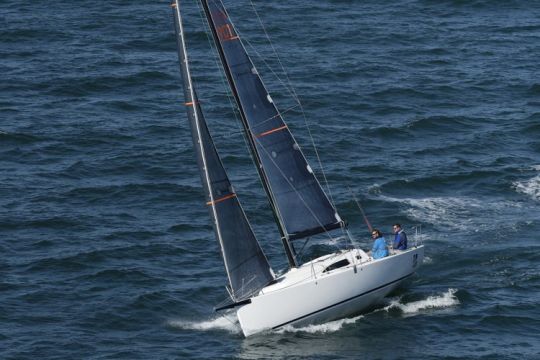
Rigging tension
Users would often like the shipyard to provide them with a guide with the rigging tensions for their sailboat. But this is mission impossible! Indeed, the tension of a rig depends above all on the sails. But when the sails are not supplied by the shipyard, they are developed by the sailmaker, far from the shipyard. Giving basic tensions would even be counterproductive. They will depend on the way of sailing, the shape of the jib and the mainsail, and even if you want to go far, on the state of the sea and the strength of the wind. It is therefore difficult to give charts.
This is especially true since the reading of blood pressure monitors is often random. Two devices will not provide the same measurement. This is why it is important to make sure that you always adjust your rig with the same device. Also taking into account that as it ages, it gives lower tensions... In short, the tension of a rig remains a real headache.
Today, given the number of J/99s sailing around the world and the experts who sail them (often J Boats dealers), J Boats has managed to draw up a panel of tensions with the different feedbacks from users. These are average figures that lack precision, but are suitable for average use in 99% of cases. Once these solutions are in place, they will have to be fine-tuned by each user.
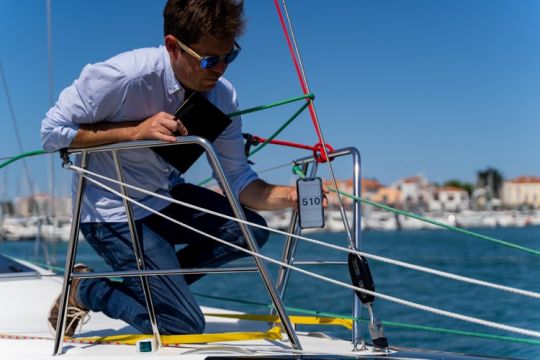
On the lookout for the latest innovations, the shipyard wanted to test a dynamometer on the forestay (a model that replaces the turnbuckle) and that allows an immediate reading via Bluetooth on a cell phone. This way, you can know your forestay tension and adjust it quickly if necessary. The reading of the forestay tension gives a good indication of the general tension of this type of rigging with push-bar.
